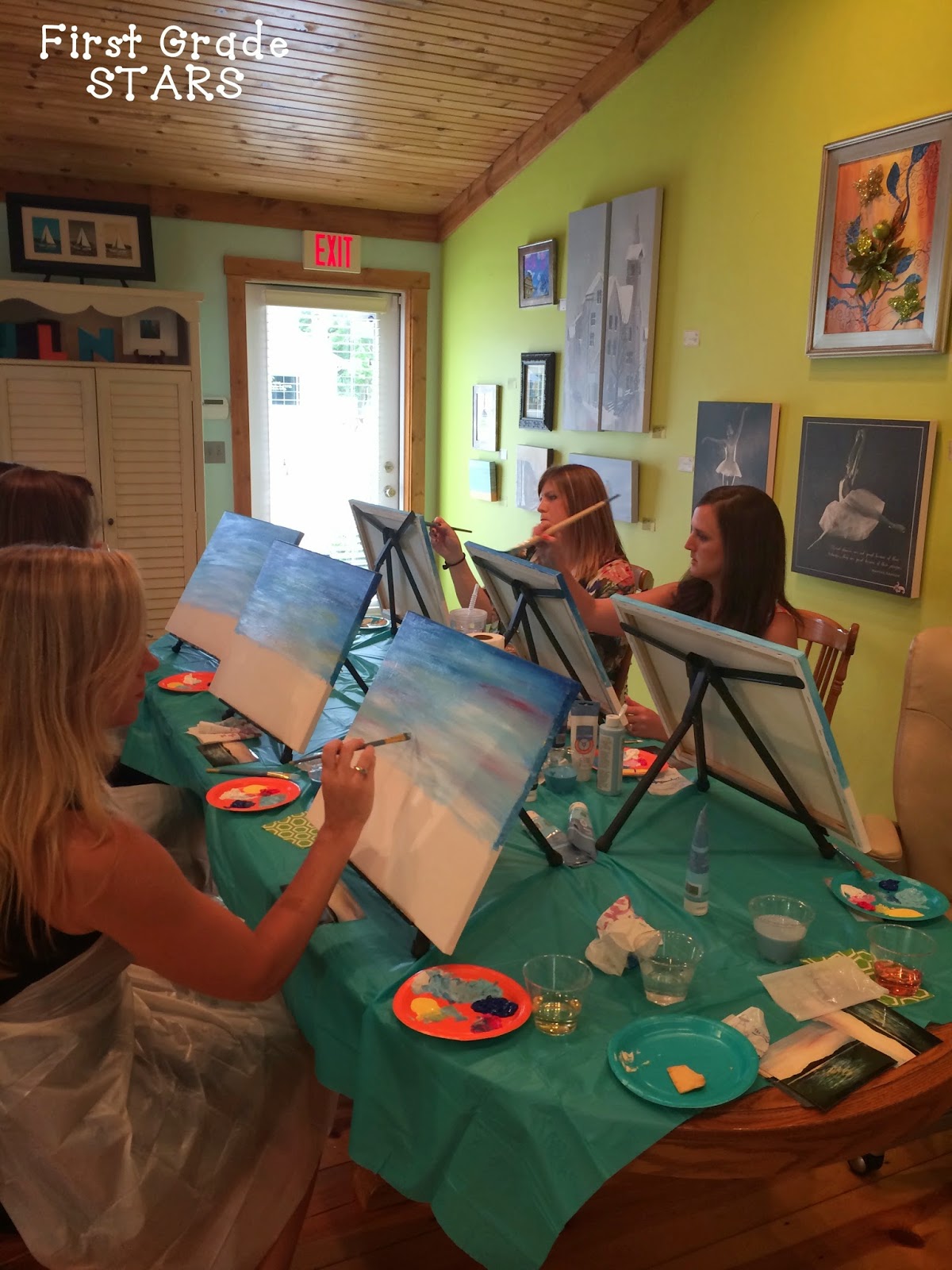Yay! I'm linking up again with 4th Grade Frolics for Monday Made It! One of these days, I will make something for my classroom, but today is not that day.
We celebrated my daughter's {gulp} fourth birthday on Saturday. Four just sounds so much older than three, and it's killing me. Anyway, just like every other little girl in America, my little love is obsessed with Disney's Frozen. If you follow me on Instagram (Click here to follow me), you saw this little preview last week:
I bought some scrapbook paper (on sale!) at Hobby Lobby and used my Silhouette Cameo to cut the circles, snowflakes, and letters.
I punched holes in each side of the circles, strung them on this snowflake ribbon I found in my mess ribbon supply (score!), and voila! A fun birthday banner!
And here's another reason to love the Target Dollar Spot (as if you needed one)! I found these Activity Books (with stickers!) and the socks in the Dollar Spot, and boxes of the fruit snacks at my local grocery store! Perfect!!
Note: The boxes of fruit snacks with Elsa and Anna on the box contain some packages with Elsa and Anna on them and some with other princesses. I didn't realize this when I bought them, but I bought three boxes, so I was covered.
Next up: Food! I scoured Pinterest (Click here to follow me on Pinterest and see my Frozen Party board) to come up with a menu and made some cute little labels to go with the food.
These are pretty self-explanatory.
I kept it simple with chicken salad and ham and cheese sandwiches. I couldn't remember what the little shop was called where Anna and Kristoff met, but now I know it was Oaken's Trading Post. So I would make that change if I had to do it all over again. Basically I just needed a reason to buy Munchies!
My daughter couldn't believe the tag on the left really said "eat" a snowman! :) And if the tag on the right doesn't make sense, we have a restaurant here called Wolf's BBQ, and they make THE BEST potato salad. And since Anna and Kristoff have wolves chasing after them at one point, this worked out perfectly!
Sorry about the blurry label. I was snapping these quickly!
And I'm completely in love with the cake. No label necessary.
And I'm completely in love with the cake. No label necessary.
And finally: the dress. I used to do craft shows and had a little hobby business called Baby Z Boutique. Technically, I still have it, but I don't do much bow or tutu making anymore, except for for my own daughters. Mommying, teaching, blogging, and TPTing just take up too much time!
Anyway, I ordered a turquoise lined tutu top from Etsy and then got to work cutting tulle pieces.
I should've taken a picture of the finished dress before she put it on, but she COULD. NOT. WAIT. to get dressed. I had to set an alarm on my phone so she would stop asking! :) You can get the idea, though.
She was testing out her new roller skates!
I always wait till the last minute to do everything, but it all turned out pretty well! I can't wait till next year! :)


















































